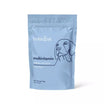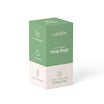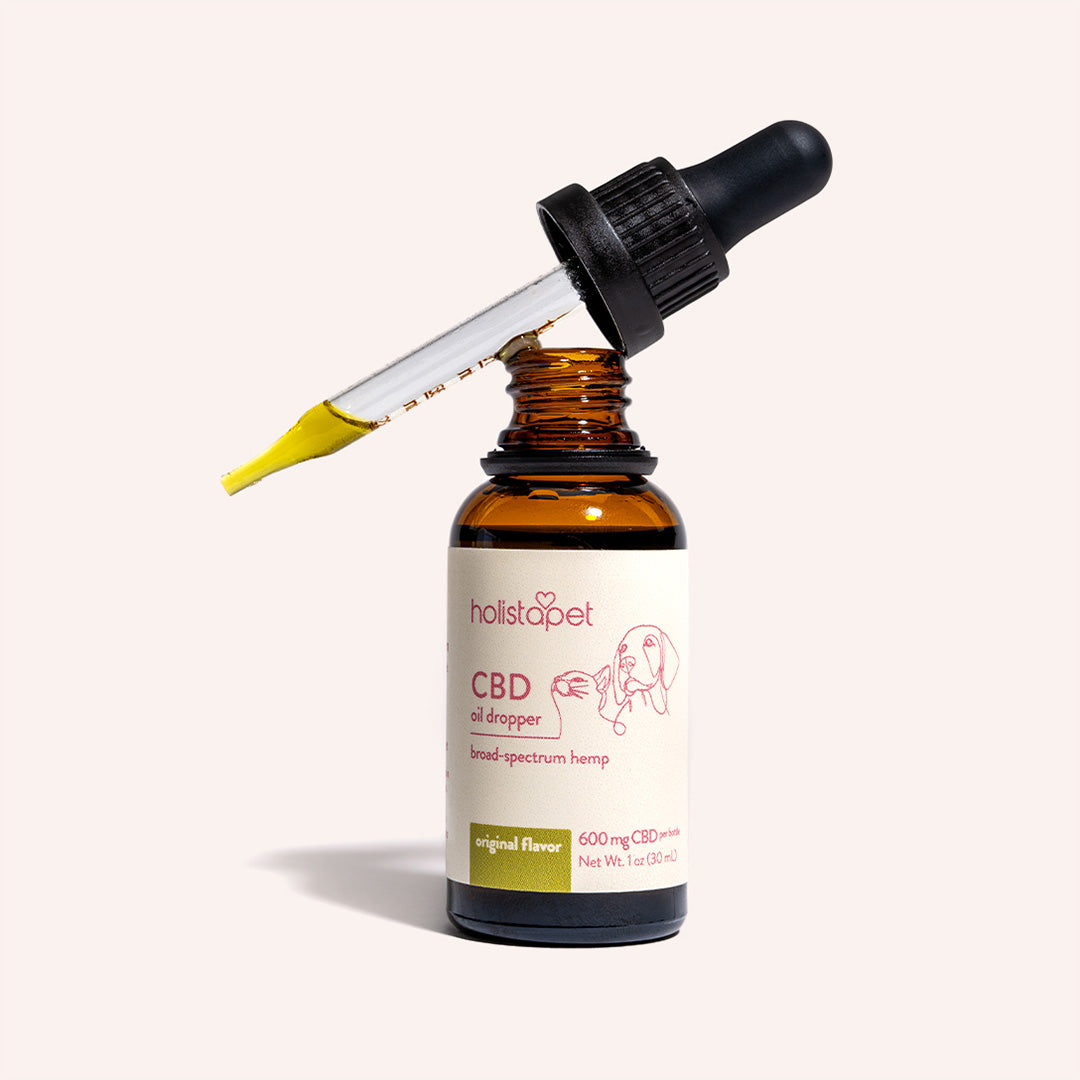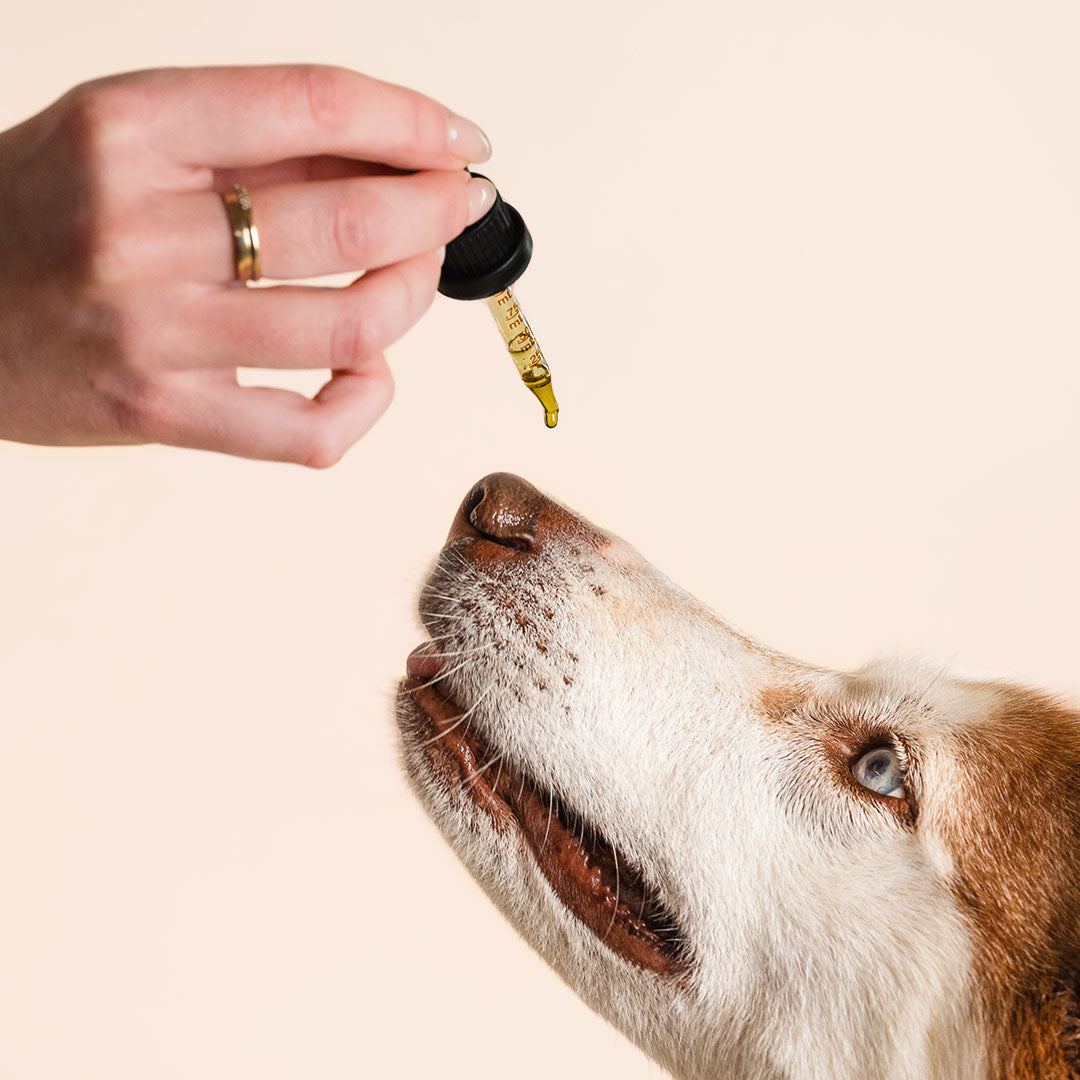Just thinking about how to bathe a cat can be scary for pet owners. Those wiggly escapes, painful cat scratches, and loud meows can overwhelm anyone. Luckily, bath time doesn't have to be a nightmare. With the right know-how, you can make the whole bathing process a breeze for you and your feline friend.
Our handy guide will walk you through everything you need to do, from getting all your supplies ready to keeping your kitty calm. With our step-by-step instructions, you can turn crazy cat baths into precious bonding moments with your pet. Let's jump right in and help you bathe your cat like a pro.
How To Bathe a Cat, Step-By-Step
Bathing your cat doesn't have to be a battle. With a clear plan and the right approach, bath time can be a calm and therapeutic ritual for you and your dear kitty. Here's how to make the whole process a success:
- Gather Your Supplies. Before you start, grab all the supplies you'll need. These include cat shampoo, a plastic cup, a fluffy towel, and a damp washcloth.
- Prepare the Bathing Area. Choose a warm room (preferably a bathroom) and fill the sink or tub with a few inches of lukewarm water. Close the bathroom door to keep your kitty from escaping.
- Calm Your Cat. A gentle touch or scratch behind your cat's ears can help calm them down. A soothing voice can also work wonders. Plus, there are calming treats you can try (more on this later).
- Wet Your Cat. Gently pour lukewarm water over your pet using the plastic cup. Avoid wetting your cat's eyes, ears, and nose.
- Apply Shampoo. Use cat shampoo, not human shampoo. Squeeze out a small amount, lather it up, and gently massage it onto your cat's fur. Start from your cat's neck and work your way down, avoiding their face.
- Rinse Thoroughly. Rinse all the cat shampoo off with warm water. Make sure there's no residue left on your cat's coat.
- Dry Your Cat. Wrap your feline friend in a towel and gently pat them dry. Long-haired cats might need a second towel or a hair dryer on a cool setting to get them completely dry.
- Reward Your Pet. After the bath, give your cat a treat and lots of praise for being such a brave kitty. Doing so will end things on a positive note.
Related Post: Do Cats Need Baths: When to Consider Bathing
Preparing to Bathe Your Cat
We can't stress this enough: Preparation is key to a successful cat bath. Ensuring you have everything ready is the first step. What elements do you need to prepare exactly? Here's a quick overview:
- Bath Supplies
- Your Cat's Mood
- Your Holding Technique
- Bathing Area
Master these bath time preps, and you can walk away from every bathing session feeling accomplished. Let's discuss each one in detail next.

Cat Bath Supplies
You wouldn't want to start bathing your kitty only to realize you're missing something, right? Make sure you have everything you need within reach to make your cat's bath successful. Don't worry — many pet stores carry these items, so they will be easy to find.
First, you'll need a special shampoo for felines. Avoid using human or dog shampoo, which can irritate your cat's skin. Next, have a plastic cup handy for rinsing your pet.
Pat your cat dry using a soft towel. For long-haired breeds, a second towel might be necessary. Some pet owners use hair dryers, too. Remember to choose the cool setting to avoid hurting your cat.
Keep a damp cloth ready for gentle cleaning around your cat's face and ears. Other useful items include a pet wipe for quick clean-ups, a non-slip mat to prevent slipping in the tub, and a brush to remove loose fur before and after the bath.
Do Felines Need Conditioner?
Most cats don't actually need conditioner. Their fur has natural oils that keep it healthy and shiny. A conditioner might just wash away those precious oils and cause dry skin or irritation. But if your kitty has long hair or faces certain skin conditions, a cat conditioner might help.
Just remember to choose a conditioner specifically made for cats. Human or dog conditioners can be too harsh and may cause skin issues. Apply the conditioner after shampooing, and follow the product's instructions carefully. Always rinse thoroughly to remove all the product from your cat's fur.
Pro tip: Regular brushing and a good diet are usually enough to keep your cat's coat in excellent condition. If you're worried about your pet's fur or skin, consult your vet first for the best care recommendations.

Tips to Keep Your Cat Calm
Now that you've got all your bathing tools ready, it's time to get your feline friend in the mood for a little wash. There are many ways you can keep your cat calm before, during, and after bathing:
- Calm Environment. A serene space can help your cat feel more at ease. Choose a spot that is quiet and free from distractions.
- Gentle Touches. Stroke your pet gently and speak in a soothing voice. Your relaxed approach can help reduce their nervousness.
- CBD Products. CBD (cannabidiol) is like a miracle worker for calming cats down. Its soothing properties can put your kitty at ease before their bath. For your best friend, we recommend HolistaPet's well-loved and well-tolerated CBD Cat Treats, CBD Calming Chews, CBD Oil, and CBD Capsules for Cats to ensure the highest quality for your pet.
- Non-Slip Mat. Place a non-slip mat in the tub or sink to help your pet feel secure and prevent slipping.
- Warm Water. Use lukewarm water to avoid shocking your cat with cold or hot water. The right water temperature can make them feel more comfortable.
- Short Sessions. Keep your cat's bath time short to minimize their distress. The quicker the bathing process, the less time your pet has to get upset.
- Rewards. After bathing, reward your cat with praise and treats. This positive reinforcement can help them link bath time with good stuff.
How To Hold Your Cat
To prevent your cat's claws and teeth from coming out during baths, hold them correctly and make them feel safe and comfy. Use one hand to gently but firmly scoop your cat under their front legs. Your other hand should support their back legs to keep them steady. This position makes it hard for them to wiggle too much.
Keep your grip gentle yet firm. If you hold your cat too tight, they might panic and try to escape. A steady hold will make them feel more secure. For nervous cats, try the towel burrito method. Wrap your kitty loosely in a soft towel, leaving their head and front paws free.
If your cat's nails come out and they start to squirm, speak softly and pet them gently. Cats can sense our emotions, so if you stay calm, they're more likely to stay calm as well.
Where To Bathe Your Cat
Now that you know how to properly handle your cat for their bath, it's time to pick the perfect location. A small, closed-in room like a bathroom is best. This makes it harder for your kitty to bolt out. Pick a warm room with no drafts to keep your cat from getting cold during and after their bath. Close the bathroom door to prevent any escape attempts.
For smaller cats, a sink works just fine. Bigger cats need more space, so a bathtub is better. Whichever you choose, put down a non-slip mat to keep your kitty from slipping and sliding.
If your sink or tub isn't ideal, a big plastic bin can work, too. Just put it in a warm, quiet place and fill it with a few inches of lukewarm water. Make sure there's good lighting and enough space for you to comfortably bathe your cat.
How To Tell if a Cat Needs a Bath
You may not need to bathe your cat regularly. When your cat licks their fur, they're actually grooming themself. But there are times when your feline friend might need a little help. Watch for these signs:
- Greasy or Smelly Fur. When your cat's natural scent turns stinky and their fur looks greasy, a bath can freshen them up.
- Matted Fur or Visible Dirt. Cats with dirty or tangled fur can benefit from a bath to get them clean and tidy.
- Exposure to Substances. If your cat rolled around in something gross they shouldn't lick off, like motor oil, you'll need to bathe them to get it off.
- Difficulty Grooming. Long-haired felines, senior cats, or sick pets who have trouble keeping themselves clean might need a bath now and then.
- Increased Scratching. If your cat is scratching like crazy, they might have itchy skin or fleas. A bath can help soothe their irritation.

How Often Should Cats Be Bathed?
Cats are pretty self-sufficient when it comes to staying clean. They spend a lot of time licking their fur, which is basically their built-in bath time. So, most cats only need a bath every few months. Bathing them too often can actually remove the natural oils from their fur, making their skin dry and itchy.
But there are exceptions to the general rule. For example, outdoor cats that get dirty from their adventures most likely need frequent cleaning. In the next section, we'll discuss more reasons cats might need baths more often.
Additional Reasons Why Cats Need Baths
Cats are typically good at grooming themselves, but there are several reasons why they might need a bath. Check if any of these apply to your cat:
- Mobility. Older cats or those with limited mobility may struggle to groom themselves properly.
- Safety Emergency. After exposure to harmful substances, a bath is super important.
- Messy Poop Booty. Cats can get feces stuck in their fur, especially if they have a long coat.
- Long Coat Care. Long-haired cats usually need regular baths to prevent matting and tangles.
- Lack of Energy. Cats feeling ill or lethargic may not groom themselves well.
- Wound Care. Pets with wounds might need a bath to keep the area clean and prevent infection.
- Skin Conditions. Skin irritation or allergies might require vet-approved medicated baths.
- Weight Issues. Overweight cats might find it hard to reach all parts of their bodies for grooming.
Can Bathing Cats Reduce Human Allergies?
Good news: Bathing cats can help manage your allergies. Many people are allergic to a protein called Fel d 1 found in cat saliva, skin, and fur. When cats groom themselves, this protein gets spread around, causing allergy flare-ups.
Cat baths can help reduce the amount of Fel d 1 in your home. This means fewer allergens floating around and fewer allergy attacks. In between baths, you can also use a wet washcloth to wipe down your cat. Plus, you can look for a cat shampoo specifically designed to reduce allergens.
Regular bathing is just one piece of the puzzle. Cleaning your home, using air purifiers, and limiting your cat's access to certain rooms can also help manage those pesky allergies. While bathing isn't a magic cure, it can help reduce allergens and make your home more comfortable for everyone.
Is It Necessary To Bathe Indoor Cats?
Indoor cats generally don't need baths as often as outdoor adventurers. They stay cleaner because they're not rolling around in dirt and leaves all day. But, as we mentioned before, there are some exceptions. If your cat has long fur, is old, has mobility issues, or suffers from a skin condition, they may need your help bathing.
Every cat is different, so always consider your kitty's individual needs. It's best to consult your vet to figure out the best bathing schedule for your indoor buddy.
Tips for Bathing a Difficult Cat
Some pets turn into scaredy-cats during bath time. But don't worry. Here are some tips to help keep your best friend calm during their spa day:
- Be Prepared. Have everything you need ready to go before you even start the water.
- Chill Out With CBD. Speak to your vet about using CBD products to calm your cat before bath time. You can try HolistaPet's CBD Cat Treats, CBD Calming Chews, CBD Oil, or CBD Capsules for Cats.
- Buddy System. An extra hand can hold your cat and offer soothing pets while you bathe them.
- Use a Gentle Stream of Water. Use a steady shower of warm water to avoid scaring your cat.
- The Burrito Method. A soft towel works best for jittery cats, helping them feel more secure.
- Keep It Short. A speedy cat bath helps minimize tension.
- Reward Your Cat. After a successful bath, shower your cat with praise and a yummy treat. They'll learn that bath time can lead to good things.
- Professional Groomer. When all else fails, consider going to a pet salon to have an expert bathe your cat. Cat groomers bathe cats of all kinds, so they may be able to help.
Bathing Techniques for Cats Afraid of Water
If your cat hates water and it's always a struggle to give them a bath, don't give up just yet. There are things you can try out. Avoid your cat's teeth and claws from coming by trying these techniques:
- Peaceful Place. Find a quiet room where your cat won't feel overwhelmed. Play some calming music or white noise to create a relaxing atmosphere.
- Start Slow. Before diving into a full bath, use a damp washcloth to wipe down your cat. This method can get them used to the feeling of water on their fur.
- Towel Wrap. Loosely wrap your cat in a towel, exposing only the area you're cleaning. This can make them feel safe and less squirmy.
- Steady Stream. Don't use a high-power sprayer. Instead, use a gentle shower or pour water slowly using a plastic cup.
- Partial Baths. If your cat is super scared, a full bath might be too much. Try cleaning one body part at a time, with breaks in between, to let them calm down.
- Treat Time. After the bath, reward your cat with treats and praise to make them feel good.
- Calming Aids. Relaxing treats, like our CBD products for cats, can help calm your kitty before their bath.
Is Washing Cats Cruel?
Here's the truth: Washing cats is not cruel at all. It's about hygiene. Baths can benefit your furry friend's health when done correctly and with care. As we discussed, cats are generally good at grooming themselves, but sometimes a bath is necessary.
Remember to follow our tips to make your kitty feel safe and comfortable during baths. Always be gentle and patient. With the right approach, the whole bathing process can be a positive experience that helps your cat stay healthy and clean.
Final Thoughts - How To Give a Cat a Bath
You should be ready to bathe your cat like a pro by now. We've given you all the tips and tricks to make your cat's bath time manageable and an overall positive experience. If you need extra help, try out our CBD options for cats. Our all-natural CBD products are ideal for keeping your kitty calm and relaxed before they get washed. Good luck and happy bathing!








![Probiotics For Dogs [Soft Chews] - HolistaPet](http://www.holistapet.com/cdn/shop/files/Probiotic-Infographic-1_472d7a29-e30c-435a-9638-1365d8c3a9f9.jpg?v=1725384841&width=104)
















![Can I Give My Cat Melatonin? [The Answer Might Surprise You]](http://www.holistapet.com/cdn/shop/articles/21._Can_I_Give_My_Cat_Melatonin_3153aafa-5290-4a72-8781-46a9c4ff5979.jpg?v=1741881894&width=500)









Leave a comment
All comments are moderated before being published.
This site is protected by hCaptcha and the hCaptcha Privacy Policy and Terms of Service apply.